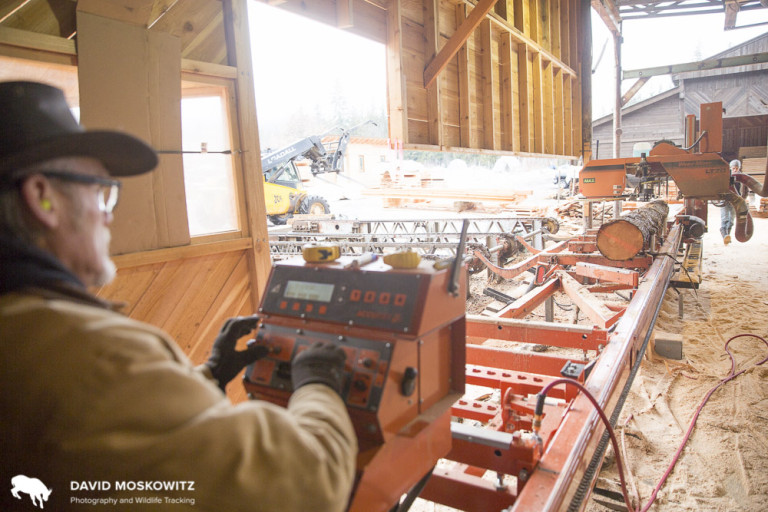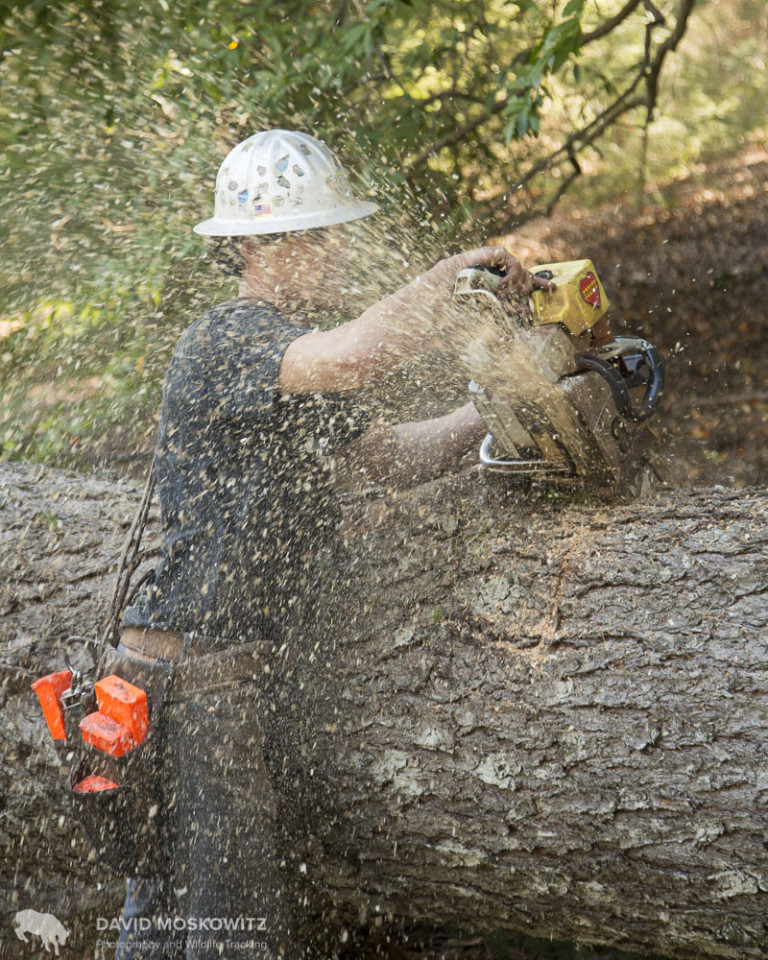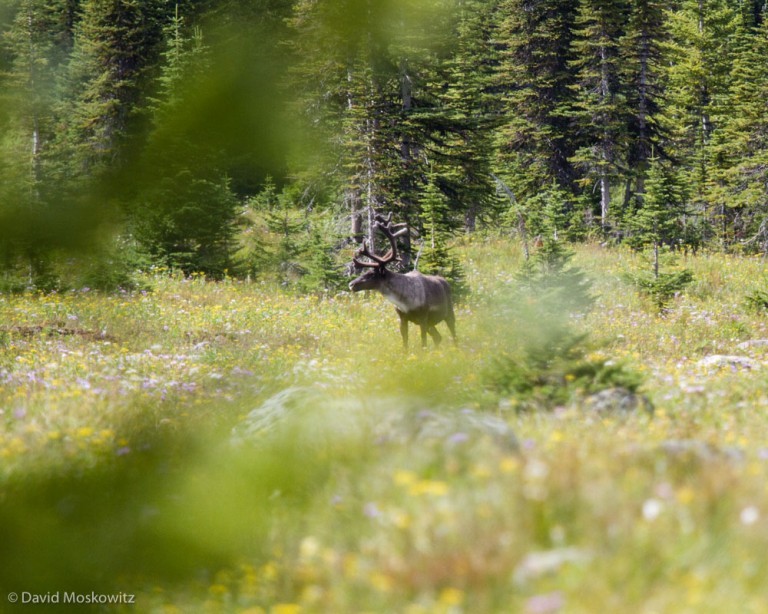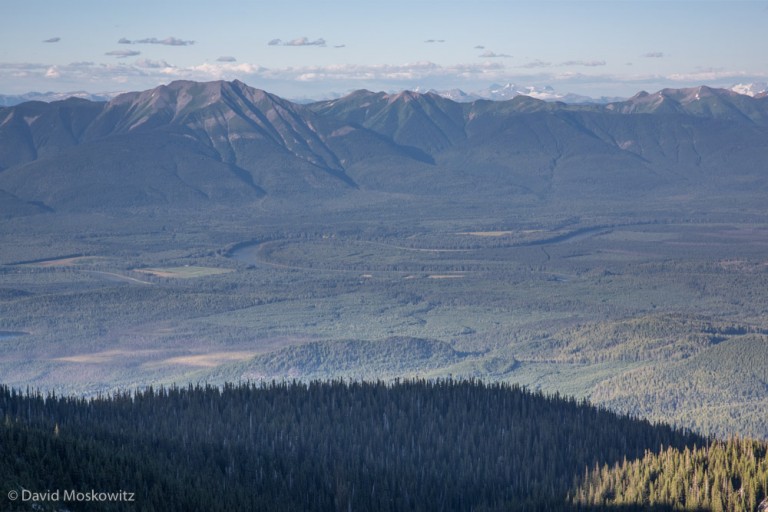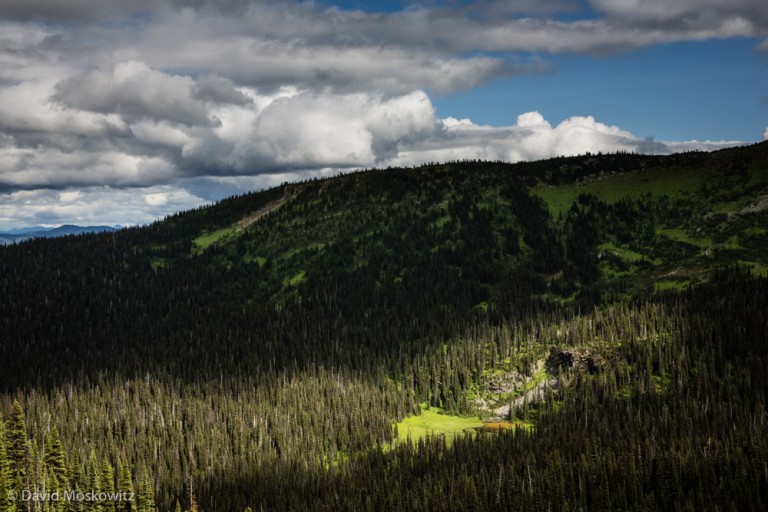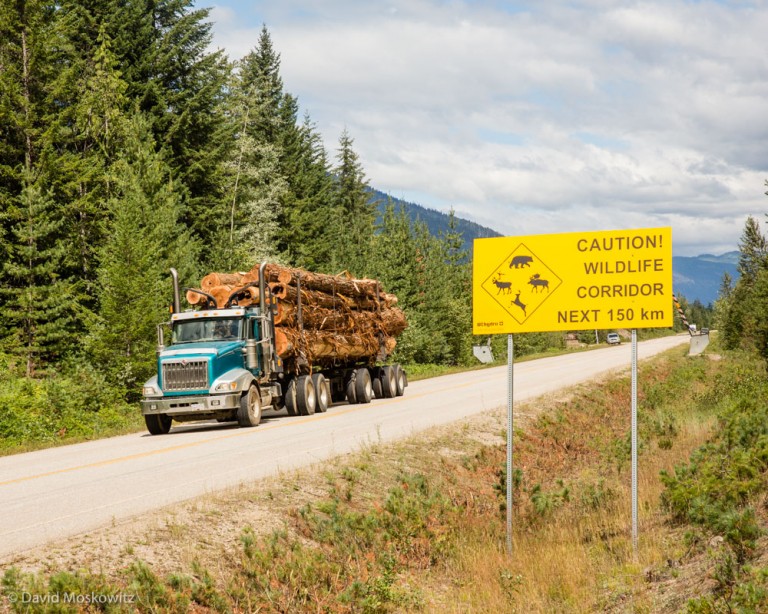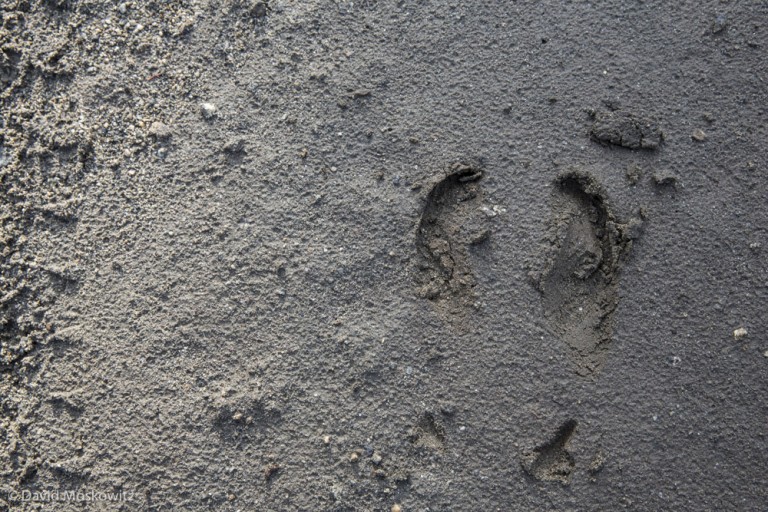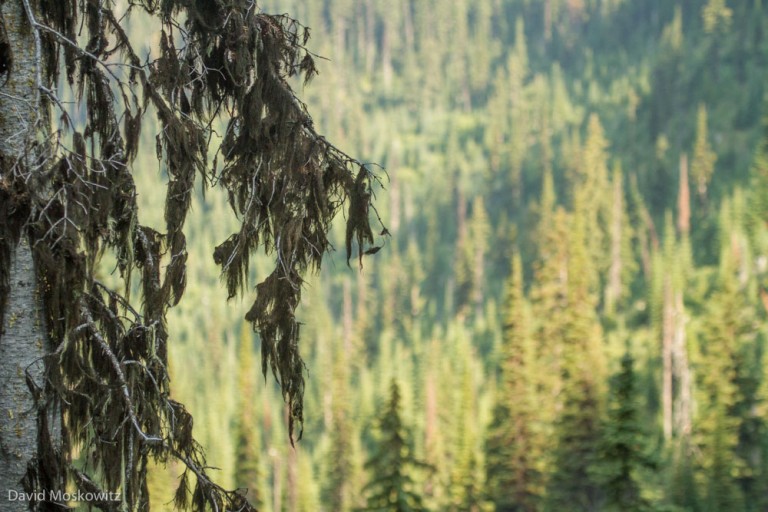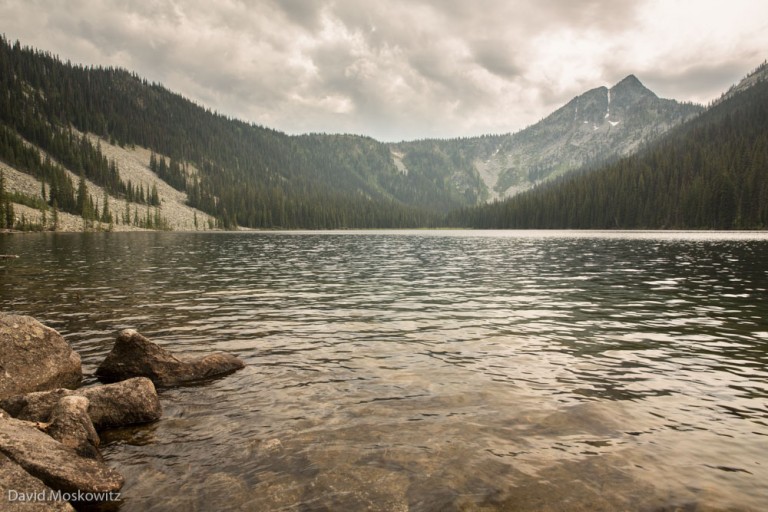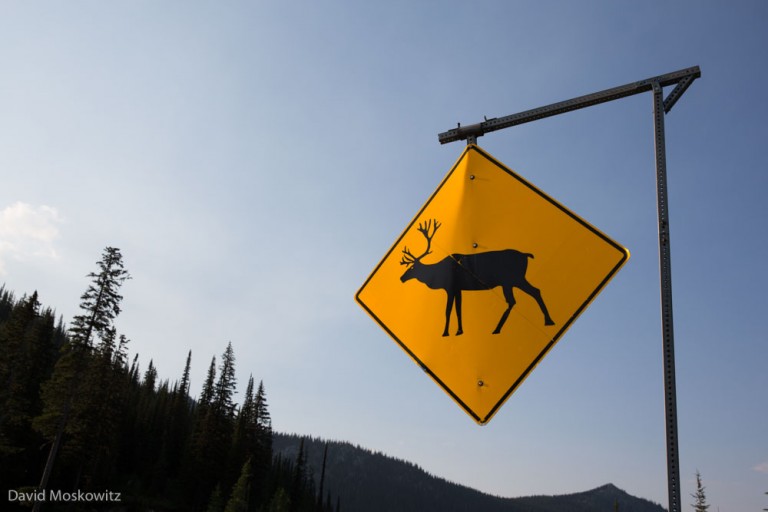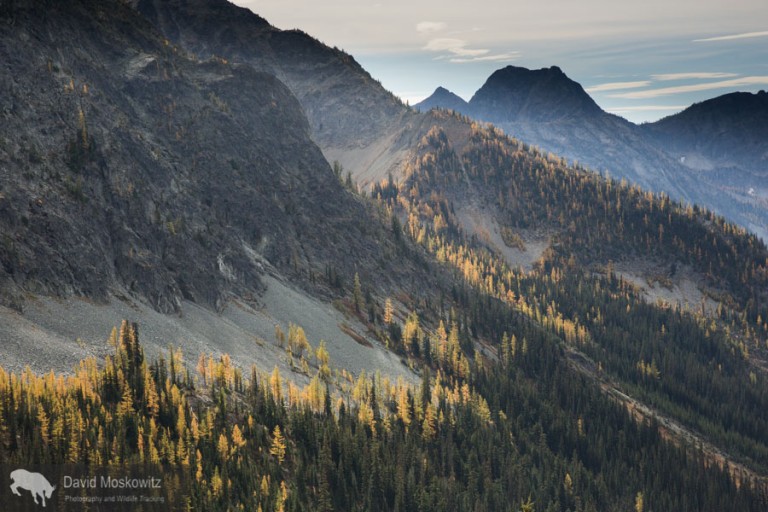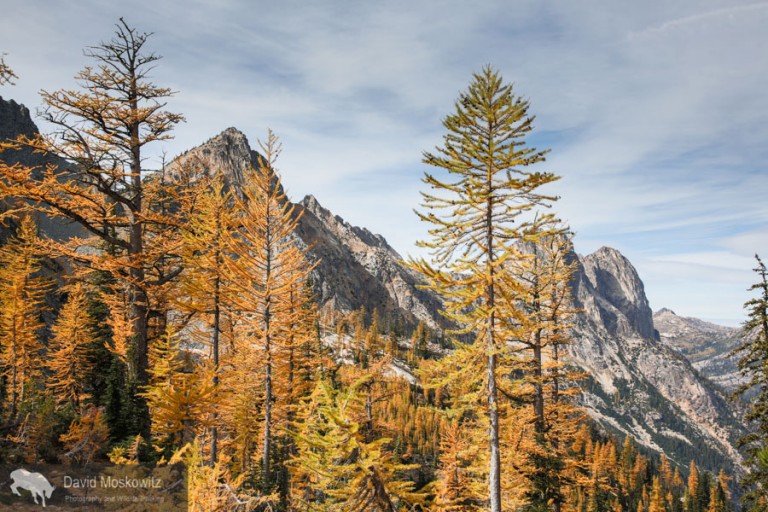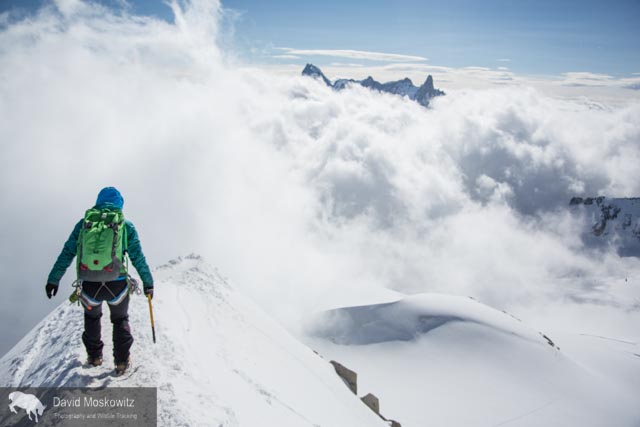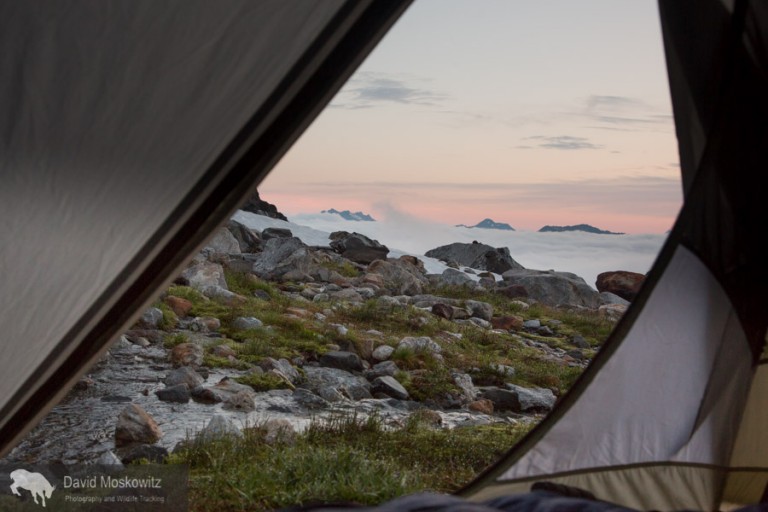Text and photographs by David Moskowitz At the northern end of the home range of the Southern Selkirks herd of Mountain caribou, a progressive experiment in community based forestry and watershed management has been underway for the past 25 years. I spent a morning out in the field with the forestry manager for the Harrop-Procter Community Forest, visiting a timber harvest. In the afternoon I visited their small scale mill where they process many of the logs they harvest, producing a variety of high value wood products.
While Community Forests make up only a small portion of the timber harvest allotment on public lands in British Columbia, they represent a significant move towards connecting local communities to management of the forests that make up the watersheds and forests in which they live and put a mandate for social and environmental values centrally into the matrix of how logging operations are designed and implemented. The incorporation of a small mill into the business structure of the Harrop-Proctor Community Forest allows the company to create value added products from many of the trees they harvest and increase the number of local peoples employed. Mill manager Rami Rothkop noted that the Harrop-Procter runs about the same amount of wood through their mill in an entire year as some of the largest mills in the province do in a single shift, while both mills employ about 7 people for running the mill. He notes that while this might seem “inefficient” on one level, it also means that you need a lot less cut trees to create the same number of jobs in the local community. This also gives the business the opportunity to be more selective in what, where, and how they log in the watersheds that not only provide them with trees for the mill but also their drinking water and provide habitat for Mountain caribou and many other species of wildlife.
The history of the creation of the Harrop-Procter Community Forest is an inspiring story about a community stepping up to take action for the ecological and economic health of their watershed and community. Along with economic vitality, the Community Forest is also working hard to manage their forests to deal with the challenges of climate change which are quickly changing the conditions literally in their backyard. A substantial part of the watersheds they permitted to log on is set aside as caribou habitat by the province. Other parts of the area have been set aside by the business itself for its value for protecting the integrity of their watershed.
I will be returning to learn more about this inspiring project in the months to come. Stay tuned.




